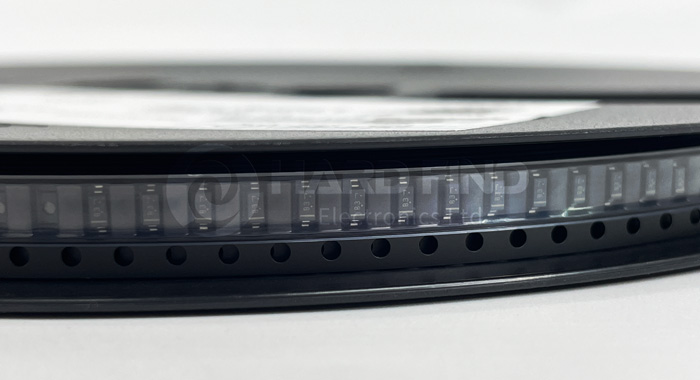In today’s ever-evolving automotive industry, new technologies are constantly being developed to create more reliable, efficient, and cost-effective vehicles. One such technology that has been increasingly adopted in automotive electronics is the use of Surface Mount Diodes. An SMD diode is a semiconductor device with two electrical contacts that can be used to control and limit the flow of electricity in a circuit. This technology has become increasingly popular in automotive applications due to its numerous advantages when compared to traditional through-hole diodes.
What is SMD Diodes?
A surface mount diode (SMD) is an electronic component that consists of a junction between two different conductive materials, typically a semiconductor material. SMDs are small, often found in components such as integrated circuits (ICs) and printed circuit boards (PCBs). They act as a single-way electrical valve, allowing current to flow through the component in only one direction, and preventing it from flowing in the opposite direction.
SMD diodes can be used in a variety of applications, such as in TV sets, computers, and electric vehicles. They are commonly used in rectifier circuits, which convert AC currents into DC currents. This is done by blocking the flow of current in one direction and allowing it to flow in the other. As a result, the output is a consistent DC voltage. Also, SMDs can be used as LEDs, in zener and schottky diodes, in voltage regulators, and in switches.
Despite their small size, SMD diodes are highly reliable, and can handle large currents and temperatures. They are also much more efficient than traditional diodes, due to their low capacitance and low on-voltage drop. This makes these components extremely useful for applications that require precise regulation of current or voltage output. Additionally, their small size makes them easier to use in tight spaces, such as in high-density circuit boards or within the confines of a laptop or mobile device.
Advantage of SMD Diodes Used for Automotive Electronics
The major benefit of using SMD diodes for automotive electronics lies in their size. Unlike their through-hole diode counterparts which take up an entire Printed Circuit Board (PCB) footprint area, SMDs are much smaller in size and can be mounted directly onto the PCB without the need for drilled holes. This drastically reduces the amount of space required for installations, allowing for more components to be placed in a much smaller area.
The small size also means that they can be placed much closer together, which helps to reduce the amount of wiring used in the circuit and thus reduces the amount of inductance and capacitance of the circuit. This, in turn, helps to improve the signal integrity and reduce the amount of electromagnetic interference that the circuit is exposed to. Furthermore, the reduced number of wiring connections helps to make the circuit more reliable – an important consideration when it comes to safety-critical systems in automotive applications.

NRVB0530T1G onsemi Diode
It also far more robust in their construction than their through-hole counterparts. Through-hole diodes typically have exposed solder joints that are vulnerable to damage and corrosion, whereas SMD diodes are fully enclosed and thus more resistant to mechanical and environmental damage. This makes them much more suited to use in harsh automotive environments, as they can withstand higher temperatures and humidity levels with much greater resilience.
Last but not least, it is much cheaper to both manufacture and install than through-hole diodes. This is due to their smaller size, which cuts down the cost of manufacturing, as well as their ease of installation which reduces the time required for installation. This helps to make them an attractive choice for automakers looking for reliable and cost-effective solutions in their vehicle designs.
We can see that the numerous advantages of using SMD diodes for automotive electronics make them an attractive choice for automakers. Not only are they smaller, cheaper, and easier to install than traditional through-hole diodes, but they are also more reliable and better suited to harsh automotive environments. As such, it is no surprise that SMD diodes are becoming increasingly common in modern vehicles.